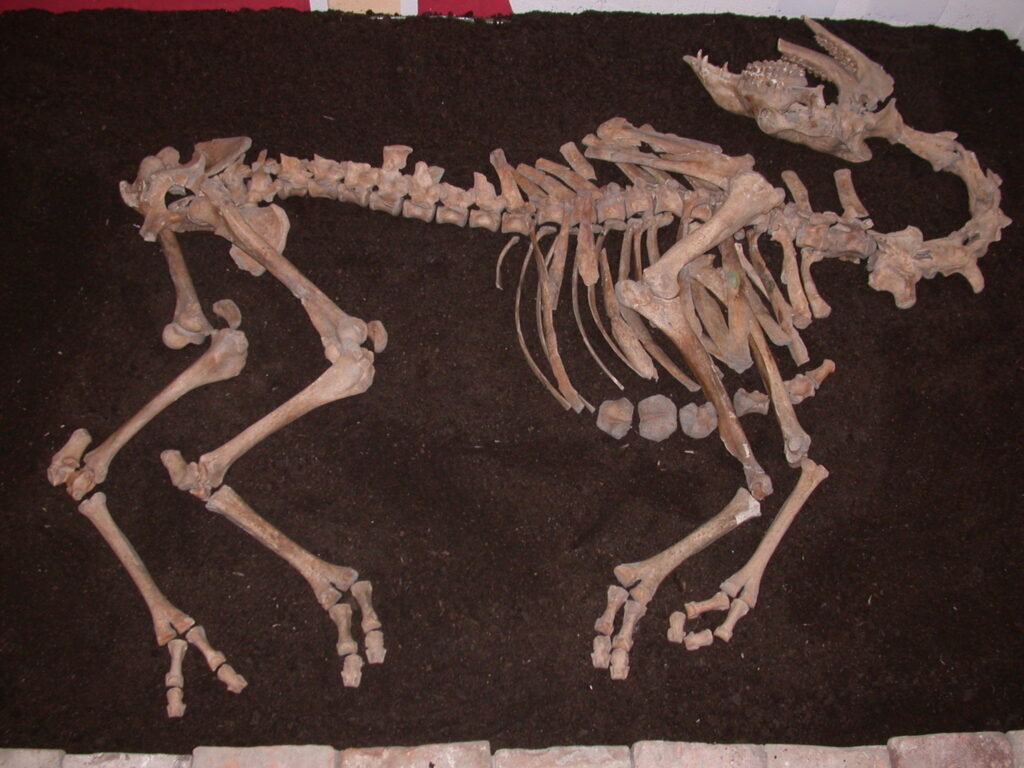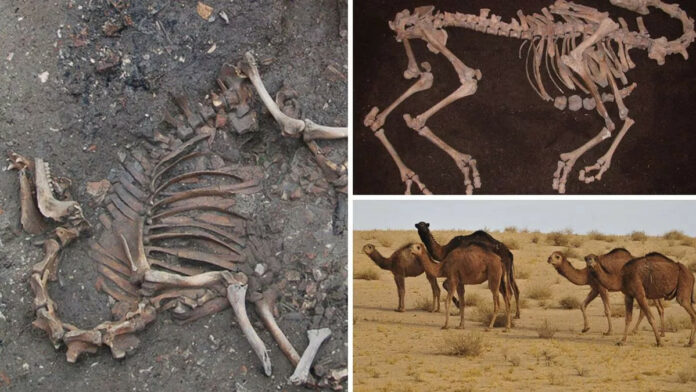An Unexpected Discovery
Archaeologists led by Dr. Alfred Galik from the University of Veterinary Medicine Vienna made an astonishing find in Tulln, Austria – a complete camel skeleton buried in a large refuse pit, dating back to the time of the Ottoman-Habsburg wars.

Initially mistaken for a large horse or cattle, a closer examination of the cervical vertebrae, lower jaw, and metacarpal bones revealed the unmistakable remains of a camel. As Dr. Galik, the lead author of the study published in PLoS ONE, explained:
“The partly excavated skeleton was at first suspected to be a large horse or cattle. But one look at the cervical vertebrae, the lower jaw and the metacarpal bones immediately revealed that this was a camel.”
A Unique Discovery in Central Europe
While camel bones have been found in Europe dating back to the Roman period, and isolated bones or incomplete skeletons have been uncovered in places like Mauerbach near Vienna, Serbia, and Belgium, a complete camel skeleton is an unprecedented find in Central Europe.
The Hybrid Warhorse of the Ottomans
A Crossbreed for Warfare

Through extensive anatomical and morphometrical analyses, Dr. Galik and his colleagues determined that the Tulln camel was a male hybrid – its mother a dromedary (Camelus dromedarius), and its father a Bactrian camel (Camelus bactrianus).
As Dr. Galik explained, such crossbreeding was a common practice at the time:
“Such crossbreeding was not unusual at the time. Hybrids were easier to handle, more enduring, and larger than their parents. These animals were especially suited for military use.”
A Legacy of Hybridization

The researchers elaborated on the historical context of camel hybridization, stating:
“The two species (dromedary and Bactrian camel) are able to interbreed, which results in larger, more powerful and efficient hybrid offspring. Crossbreeding probably took first place in Assyria at the beginning of the 1st millennium BC and this technique continued over Antiquity towards the modern times. Hybridization was improved as the Arabs went into Iran and Central Asia.”
Highlighting the military significance of these hybrids, they added:
“Obviously, such hybrids were of great importance in the Ottoman troops mainly for transportation but also as riding animals. The first appearance of a camelry, soldiers fighting with bows on camelback, had been recorded during the invasion of Xerxes in Greece 481 BC.”
Continuing Hybridization Practices
The practice of camel hybridization persists to this day, as the researchers explained:
“Today, hybridization facilitates improved milk and wool yield in hybrid Tulu or Nar camels from Middle Eastern and Central Asian countries. Commonly, two hybridizing methods are recognized, Kurt-nar (dromedary female x Bactrian male) and Kez-nar (Bactrian female x dromedary male) followed by F1-backcrossing with either dromedary for increased milk productivity or Bactrian camel for a higher wool yield and cold resistance.”
The Final Journey of the Tulln Camel
A Valuable Asset, Not a Food Source
The Ottoman army relied on both horses and camels for transportation and as riding animals. In times of scarcity, soldiers would consume the animals’ flesh. However, the complete state of the Tulln skeleton suggests a different fate for this hybrid camel.
Dr. Galik hypothesized:
“This means that the animal was not killed and then butchered. It may have been acquired as part of an exchange.”
Dating the Find
Alongside the camel skeleton, the excavations uncovered ceramic plates, a coin from the time of Louis XIV (dating between 1643 and 1715), and a medicinal bottle containing Theriacum – a medieval remedy from the chemist’s shop ‘Apotheke zur Goldenen Krone’ in Vienna, which existed between 1628 and 1665. These artifacts helped date the site with greater precision.
Through this extraordinary find, archaeologists have gained invaluable insights into the military practices, transportation, and cultural exchanges that took place during the Ottoman-Habsburg wars, shedding light on a pivotal era in European history.

